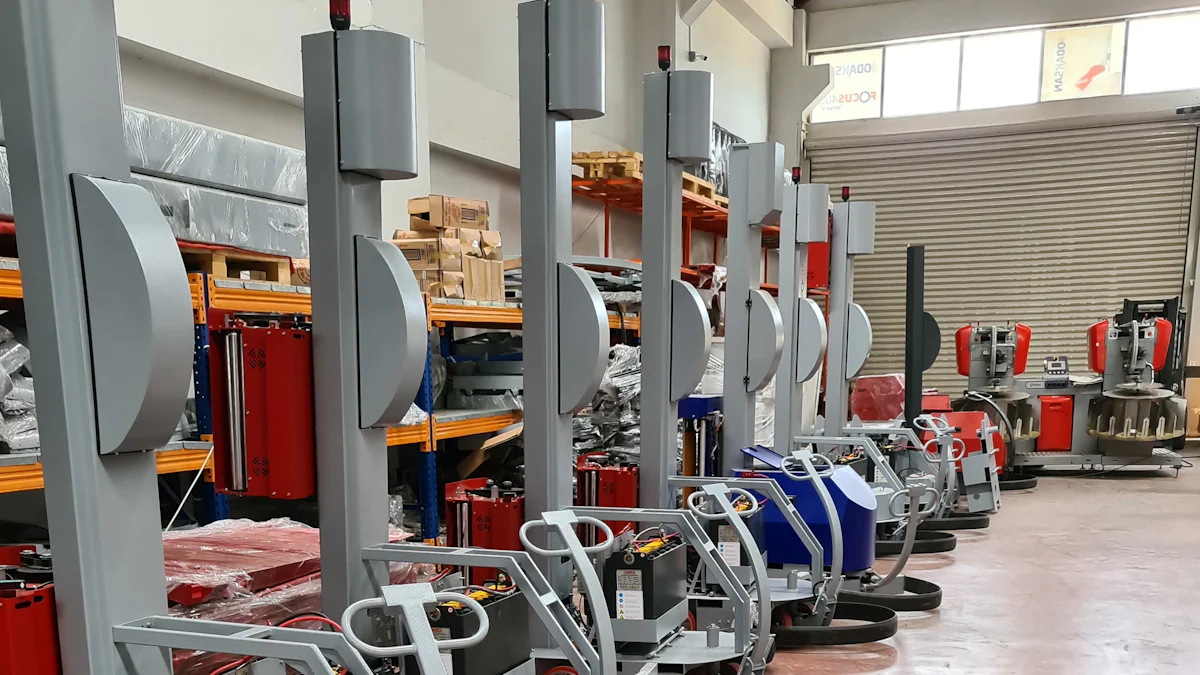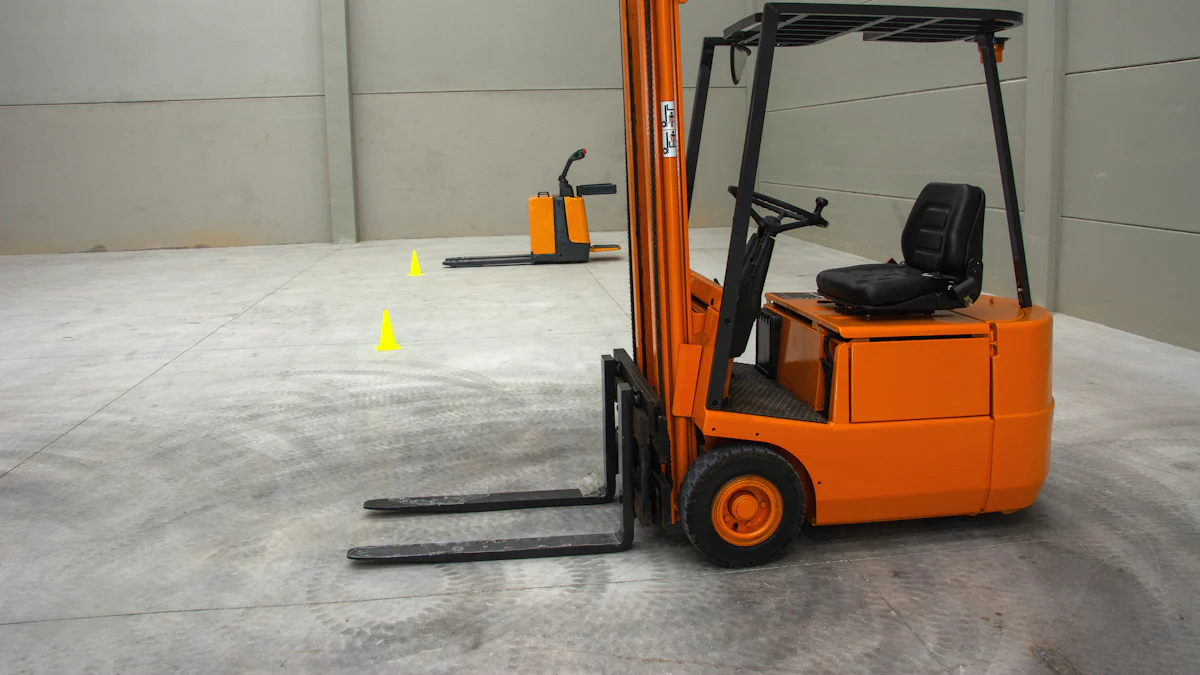
Adjusting a pallet jack is crucial for maintaining peak performance and safety in industrial settings. This blog will guide you through the process step by step, ensuring optimal functionality of your equipment. By making these adjustments every six months, you can prevent accidents and damage to goods. Enhancing the efficiency of your Pallet Jack not only improves productivity but also reduces the risk of workplace injuries.
Necessary Tools and Safety Precautions

Required Tools
List of tools needed
- Wrench
- Screwdriver
- Hydraulic jack
- Nut driver
Where to obtain these tools
You can purchase these tools at your local hardware store or order them online for convenience.
Safety Precautions
Personal protective equipment (PPE)
It is essential to wear the appropriate safety gear, including gloves and safety goggles, to protect yourself from any potential hazards during the adjustment process.
Safety guidelines to follow
Always ensure that the pallet jack is on stable ground before starting any adjustments. Avoid tilting or setting it down at an angle, as this can lead to air getting trapped in the hydraulics, affecting its performance. Remember to distribute weight evenly on the pallet for stability and balance.
Positioning the Pallet Jack
To ensure a successful adjustment process, aligning the pallet jack correctly is crucial. This step sets the foundation for optimizing its performance and safety features. By following these steps diligently, you can enhance the efficiency of your equipment and minimize potential risks.
Preparing the Work Area
Clearing the area
- Begin by removing any obstacles from around the pallet jack. This includes debris, loose items, or any other objects that could hinder its movement.
- Creating a clear path ensures smooth maneuverability during the adjustment process.
Ensuring stability
- Check the ground surface to confirm it is level and stable. Uneven surfaces can lead to instability and unsafe conditions.
- Inspect for any hazards such as slippery spots or cracks that could pose a risk during operation.
Positioning the Pallet Jack Correctly
Aligning the pallet jack
- Position the pallet jack parallel to the pallet you intend to move. Proper alignment is essential for efficient loading and unloading processes.
- Ensure that both forks are centered under the pallet to distribute weight evenly and prevent imbalance issues.
Locking the wheels
- Before making any adjustments, securely lock all wheels in place using wheel locks or brakes.
- Preventing unintended movement guarantees a safe working environment and avoids accidents caused by unexpected shifts in position.
Adjusting the Screw
Locating the Adjustment Screw
Identifying the screw
- Locate the adjustment screw underneath the pallet jack. It is a crucial component for fine-tuning the performance of your equipment.
- Identify the screw carefully to ensure you are working on the correct part of the pallet jack.
Accessing the screw
- Use your wrench to access the adjustment screw easily. This tool will help you reach and adjust the screw effectively without causing any damage.
Making the Adjustment
Turning the screw clockwise and counterclockwise
- Rotate the screw clockwise to make adjustments when lowering your pallet jack. This action optimizes its functionality for smoother operations.
- Turn the screw counterclockwise if you need to lift your pallet jack. This adjustment ensures proper performance based on your operational needs.
Testing the adjustment
- After making adjustments, test the pallet jack’s functionality by raising and lowering it multiple times. This step validates that your adjustments have been successful and that your equipment operates smoothly.
Locking the screw with the nut
- Once you have achieved optimal performance, remember to securely lock the adjustment by using a nut near the screw. This prevents any unintended changes and maintains your desired settings for efficient operation.
Adjusting the Fork Height

Understanding Fork Height
Adjusting the fork height of a pallet jack is essential for efficient material handling and ensuring proper balance during transportation. The correct fork height prevents damage to goods and enhances the longevity of the equipment, aligning with manufacturer’s guidelines.
Importance of correct fork height
Maintaining the appropriate fork height on a pallet jack is crucial for safe and effective operation. By adhering to the recommended height settings, you can prevent accidents, improve stability, and prolong the lifespan of your equipment.
Manufacturer’s guidelines
Following the manufacturer’s guidelines for adjusting the fork height is paramount. These instructions provide specific details on the optimal fork height based on the type of pallets being used and ensure compliance with safety standards.
Adjusting the Forks
To adjust the forks of a pallet jack, certain tools are required to facilitate a seamless adjustment process without compromising safety or efficiency.
Tools needed
- Wrench: Used to loosen and tighten bolts securely.
- Hydraulic jack: Assists in lifting heavy loads for easy access to the forks.
- Nut driver: Essential for adjusting nuts and bolts with precision.
Step-by-step adjustment process
- Begin by identifying the desired fork width based on your specific operational needs.
- Utilize a wrench to loosen the bolts securing the forks in place.
- Adjust the forks using a hydraulic jack, ensuring they are positioned at the recommended height.
- Once adjusted, securely tighten all bolts using a nut driver to lock the forks in place.
Adjusting the Handle
Importance of Handle Adjustment
Ergonomics and Safety
Professional Ergonomist:
A professional ergonomist can help determine the risk factors of different tasks and provide ways for workers to be safe and consistent with their handling. They can also identify issues and track the progress to develop new ways to solve problems in the warehouse.
Companies:
Companies are investing in ergonomics because it makes good sense from a number of angles: reduced workers’ compensation and injury rates, increased productivity, and less labor dependence. Ergonomic issues bear directly on productivity since good ergonomics tends to also increase speed and accuracy. The right solutions can address all of these factors.
Step-by-Step Handle Adjustment
Tools Needed
- Wrench
- Screwdriver
- Hydraulic jack
- Nut driver
Detailed Adjustment Process
- Identify the handle adjustment mechanism on your pallet jack.
- Use a wrench to loosen any bolts securing the handle in place.
- Adjust the handle height based on ergonomic guidelines provided by experts.
- Securely tighten all bolts using a screwdriver to lock the handle in its new position.
- Test the handle adjustment by maneuvering the pallet jack to ensure smooth operation.
- Evaluate comfort and ease of use, making further adjustments if necessary for optimal performance.
By following these steps, you can ensure that your pallet jack’s handle is ergonomically positioned, promoting safety, efficiency, and overall well-being in your workplace environment.
In summary, regular maintenance and adjustments are essential for ensuring the peak performance of your equipment. By following the recommended procedures every six months, you can prevent accidents and damage to goods while maximizing efficiency. Remember to prioritize safety protocols throughout the adjustment process to maintain a secure working environment. Embrace the opportunity to enhance your pallet jack’s performance for optimal efficiency and safety in industrial settings.
Post time: Jun-21-2024
